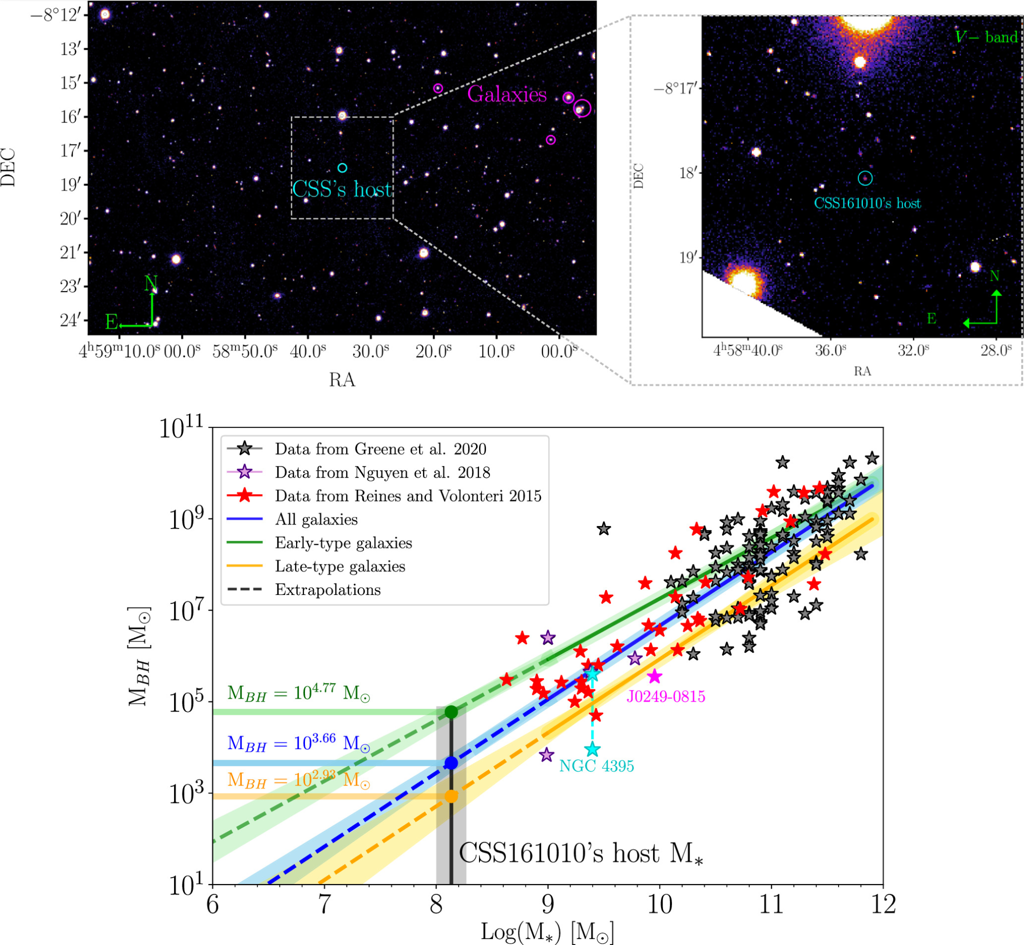An unusual cosmic flare may have concealed a long-awaited black hole of intermediate mass.
In space, relatively low-mass black holes are found, which are formed from the cores of "dying" stars. Supermassive black holes are observed at the centers of large galaxies, having absorbed the material of millions or even billions of stars.
Scientists are convinced that there must be something in between these two types in the Universe — black holes with masses of, say, five or ten thousand suns. There is already a list of hundreds of candidates, and, for example, the object near the galaxy ESO 243-49, nearly 300 million light-years away from us, is confidently considered a black hole weighing about 20 thousand suns.
Recently, an international team of astronomers reported in The Astrophysical Journal that in 2016 they identified a new contender for the title of such a rare and elusive black hole. At that time, they discovered a burst in a dwarf galaxy located 470 million light-years from us.

The burst turned out to be very unusual: it reached its peak brightness in less than four days, and then dimmed significantly over the next couple of days. This extremely rapid dynamics was emphasized by the researchers: bursts from supernova explosions occur much more gradually.
Subsequently, they were able to study the spectrum of light from this burst in detail, which allows determining both the composition of the observed material and the nature of the object's "behavior." As the researchers write, it was found that as a result of this unusual event, hydrogen was traveling towards us at speeds of up to one-tenth the speed of light. This was established through the so-called blue shift: when a light source moves towards the observer, the wavelength of that light shortens, with the shortest visible light being violet. The faster the object rushes towards us, the more blue it appears.
A supernova is also a powerful particle accelerator, but not to that extent. Furthermore, a supernova explosion involves the shedding of the outer layers of a "burned-out" star, which has already exhausted its hydrogen for thermonuclear reactions. Sometimes, a supernova explosion occurs when the former core of a "dead" star (a white dwarf) absorbs material from a companion star and eventually ignites from this excess. The observed object does not resemble such an event at all.
Therefore, the conclusion was made regarding it: a hydrogen-rich star flared up in its prime — at that moment, it was being destroyed by a black hole. As astronomers explain, the star is not completely destroyed: it has only approached the abyss too closely and lost part of its material. This phenomenon is known as tidal disruption — the disintegration under the influence of gravity.
Estimates suggest that the mass of this black hole should be approximately between one thousand to ten thousand suns. Thus, if all calculations are correct, this is indeed a genuine black hole of intermediate mass. It is located about one thousand light-years from the center of a small galaxy. However, according to theoretical models, this is quite common in dwarf galaxies.